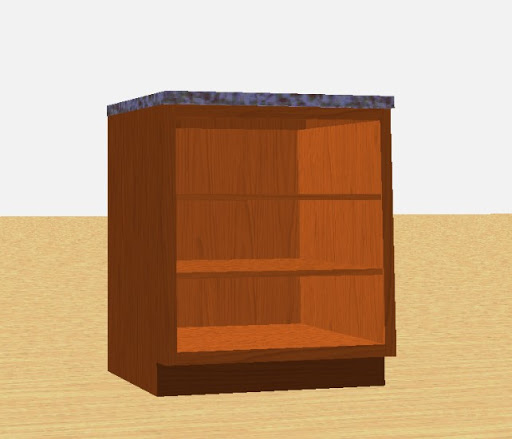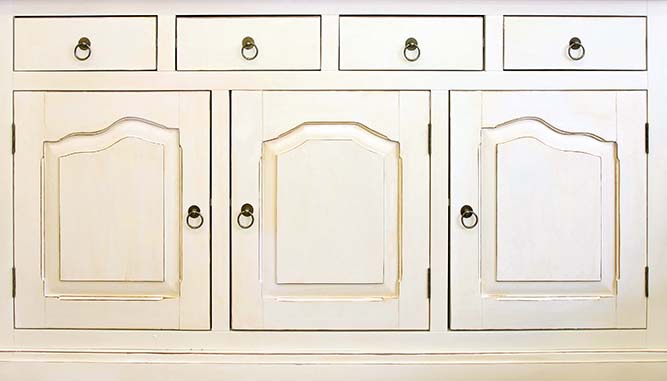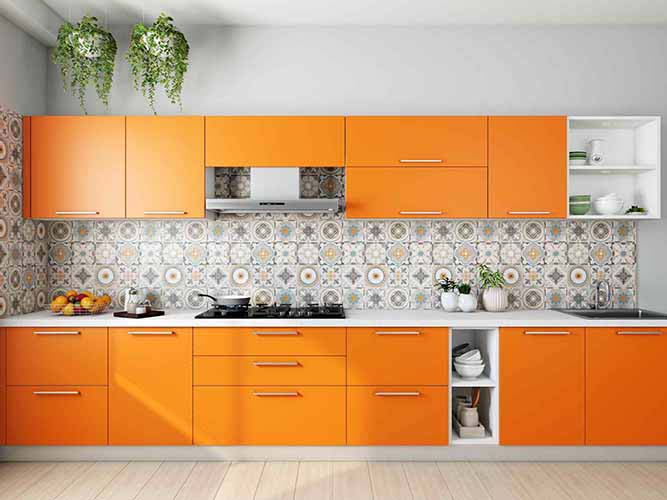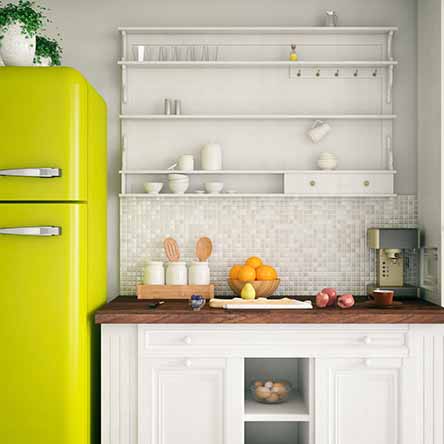The Guide to Overlay and Inset Cabinet Doors
If you have been thinking about refacing your cabinets, you might be wondering how to decide whether you want to have an overlay or inset style for you cabinet doors. This decision has a lot to do with the construction style of your cabinet box, but it is also a question of what kind of look you have in mind. Each method can accommodate several different styles, so it is important to have at least an idea of a direction, if not a solid plan. To help you work on creating your cabinet refacing plan, we put together this guide on the benefits and drawbacks of overlay and inset cabinet doors.
In this guide, we are going to begin by discussing the two types of cabinet boxes. The type of cabinet box you have will determine the options you have available for mounting your doors. Once you know what your options are you will be able to start looking into the aesthetic plan for the space. From boxes to styles, we hope this guide will help you with your cabinet project.
Cabinet Boxes: Framed or Full access?
If you have never replaced your cabinet doors, you might have never thought about whether your cabinet box has a face frame or not. If you are planning a more substantial remodel that will include new boxes, then you likely already have an idea of what interests you. Otherwise, you will need to head over to your cabinet.
Framed Cabinet Boxes
A framed cabinet box features a six-sided design, and it is typically the most common style in the US. The face frame of the box is where you will see the openings for storage, and it is where you will be mounting the doors. One of the biggest benefits of choosing framed cabinets is that you have a good deal of freedom in how you hang your doors. The doors can be inset or mounted with full-overlay, or they could be somewhere in between with a partial overlay.
Pro’s and Con’s
The biggest advantage with choosing a framed cabinet is the number of options you have for mounting your doors. This means that you could change up the style of your kitchen in the future, without having to worry about changing the cabinet box. However, there is a drawback to this flexibility. Typically, a framed cabinet will not have as much space inside of it as the same size frame-less cabinet box.
Frame-Less Cabinet Boxes
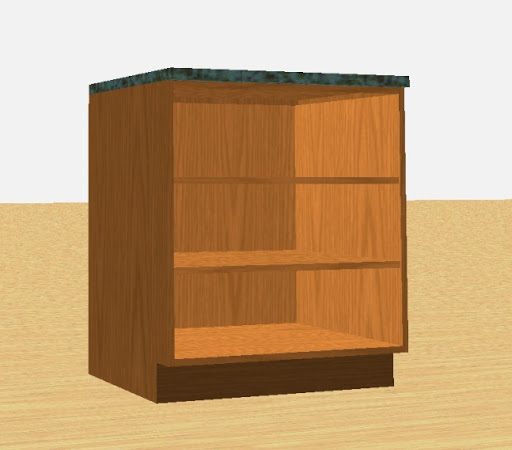
Frame-less cabinets are often referred to as full-access cabinetry and are commonly found throughout Europe. A frame-less cabinet box is constructed similarly to a framed box, except that it lacks the face frame. However, this is not the only difference. Since there is no face frame on the box, you mount the doors to the walls of the boxes. This means the walls of the frame-less box are thicker to support the hinges and doors.
Pro’s and Con’s
The biggest benefit of choosing a frame-less cabinet box is more storage. Since there is no face frame on the cabinet box, there is more space within the box to store your kitchen essentials. However, this added storage does have a drawback. Without the face frame, the door must be attached to the sides of the box. This means that you can only mount your doors for a full overlay.
Mounting Your Doors
If you choose a framed cabinet box, then you will have a few options when it comes to mounting your doors. From full to inset, there are three options with lots of customization available. The method you choose for mounting your doors does not wed you to any particular aesthetic; however, some styles are better accomplished with a partial overlay, for example, rather than inset. Below, we are going to take a look at the different mounting methods.
Inset
If you are interested in a traditional, seamless look, inset cabinet doors could be for you. These doors are mounted inside the cabinet box and are flush with the face frame of the box, which means this style can only be accomplished with a framed cabinet box. To properly order your doors for an inset style, you will need to order them smaller than the cabinet box opening. While inset cabinets can be aesthetically pleasing, they are know for having issues with swelling due to moisture.
Sizing Inset Doors
For example, with a single door if you want to have a standard reveal of 1/8th of an inch all around, you would need to subtract 1/4th of an inch from the height and width of the door. So if your cabinet box opening is 10”x 10”, you would want to order the door to be 9.75” high 9.75” and wide.
For split inset doors, we are going to need to use a more complicated formula. In this example, let’s assume the cabinet box opening is 36” wide and 16” high. For the height measurement, you will follow the same steps as you would for a single door. For the width, first we multiply our reveal by 2 [⅛ x 2=.25] so that it accounts for both sides. Next, we subtract that from the width of the opening [36 - .25=35.75] and then divide by 2 [35.75/2 =17.875]. Finally, subtract half the reveal and you have your door width [17.875-.0625=17.8125]. And so, each door will need to be 17.8125” wide and 15.75” high.
For more guidance on measuring cabinet doors, check out our full cabinet door measuring guide.
Partial Overlay
Another style that can only be accomplished with a framed cabinet box, a partial overlay allows you to cover part of the face frame while leaving some of it visible between the doors. With only part of the frame covered, you could paint it an accent color to give your cabinets a pop of personality. For something a bit less trendy, all white cabinets never go out of style and can be easily personalized. The partial overlay is typically the most popular style in the US, and it is often the most budget-friendly of the three options here.
Full-Overlay
Available on both framed and frame-less cabinet boxes, full-overlay doors completely cover the cabinet box frame. This is another way to create a seamless look with your cabinets that can be perfect for modern or traditional aesthetics depending on the style of doors.
Sizing Doors with Overlay
To size a single door, you simply measure your cabinet box opening and then add your desired overlay. For example, if your cabinet box was 10”x 10” and you wanted a 1/2” overlay, then you would add 1” to the height and width of the door making it 11”x 11”.
Like with inset, measuring for split doors is a bit more difficult. For this example, the cabinet box will be 36” wide and 16” high. You find the height measurement the same way, but you will need to do a bit of calculation for the width of the doors. First, we add our overlay to both sides of the opening just like above [1 +36=37]. Then, we divide that number by 2 [37/2=18.5].
Now that we have the width equally divided, we need to subtract the reveal—or space between the doors—so that they can be opened and closed without hitting each other. For this example, we will use a standard ⅛” reveal. Divide this number in half and subtract it from your width [18.5-.0625=18.4375]
Finishing Up
Now that you are familiar with cabinet box styles and door mounting methods, you are ready to get started! Sizing your doors is a critical part of ordering your cabinets, so be sure to measure twice so you only have to order once.
If you are ready to start ordering or if you need assistance, please feel free to call us at 1-855-669-5222 or send us an email at info@cabinetnow.com. Our team of cabinet experts is here to help with everything from measuring to ordering.
 MADE IN THE USA
MADE IN THE USA


